Hitachi’s Nuclear Power Business
Amid a pressing need to address working style reform and a generation of people in senior roles who are now leaving the workforce, the systematic management of knowledge and skills and the passing on of these to the next generation are recognized as important challenges by many companies. Similarly, the handing on of expertise in nuclear energy is also an urgent issue for Hitachi-GE Nuclear Energy, Ltd., the company responsible for Hitachi’s nuclear power business. In response, the company has called on the assistance of external consultants to identify the challenges by means of in-house surveys and to visit benchmarking best-practice organizations in knowledge management both in Japan and overseas, and is introducing knowledge management practices based on the results of this study. This article describes the knowledge management initiative that has been undertaken since 2017 on the basis of “transferring knowledge from person to person,” “connecting people,” and “connecting people with information,” and the plans for the future.
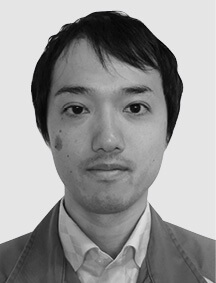
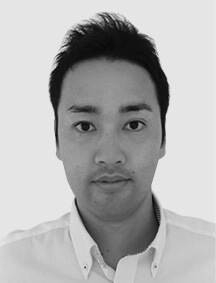
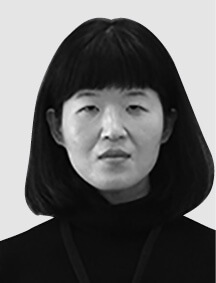
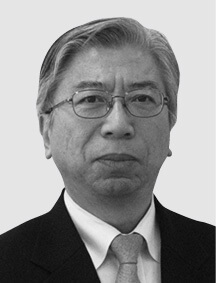
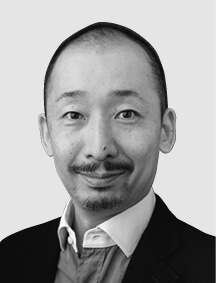
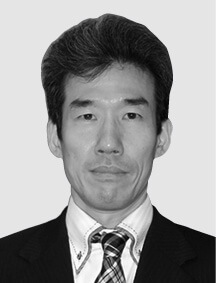
Hitachi-GE Nuclear Energy, Ltd. (Hitachi-GE) used an in-house survey and interviews conducted in 2017 to identify the primary challenges surrounding technical knowledge transfer in its internal operational reforms. This found that, while there is a rich store of expertise in the tacit knowledge of individuals, the corporate organization lacks the means to put this knowledge to use in a systematic manner. In terms of the “socialization, externalization, combination, and internalization” (SECI) model proposed by Ikujiro Nonaka, Professor Emeritus at Hitotsubashi University, the conclusion was that the company as a whole was placing a low priority on “combination” (the process of combining explicit knowledge and generating new explicit knowledge), and was not putting time into achieving this(1). Accordingly, Hitachi-GE set itself an objective of implementing knowledge management (KM) to improve the formalization of knowledge and its systematic sharing and use.
Fig. 1—Roadmap for KM Activities The roadmap is based on the maturity model used by the American Productivity & Quality Center (APQC), one of the world’s largest knowledge management (KM) organizations.
The roadmap is based on the maturity model used by the American Productivity & Quality Center (APQC), one of the world’s largest knowledge management (KM) organizations.
While KM experienced a global boom in the early 2000s, there are few reports of companies in Japan that have persisted with it to the present day. At many European and US companies where staff turnover is routine, however, the question of how to retain knowledge within the organization has long been an issue and for this reason KM has become a regular part of business management as a means of achieving this(2).
Accordingly, Hitachi-GE embarked on KM by conducting benchmarking against US companies, specifically the American Productivity & Quality Center (APQC), the world’s largest KM organization, and its member companies.
The three keys to successful KM identified by this study were: (1) Linking KM strategy to business issues, (2) Putting governance measures in place for KM implementation, and (3) Proceeding step by step on the basis of a roadmap. Accordingly, Hitachi-GE’s roadmap for KM was broken into stages, as shown in Figure 1. Stage 1 is to grasp the situation, Stage 2 is to develop a KM strategy, Stage 3 is to conduct a pilot, Stage 4 is to scale up KM activities (company-wide rollout), and Stage 5 is to institutionalize KM.
KM at Hitachi-GE was launched after Stage 1 was completed. The next step, Stage 2, was to establish an implementation strategy. In addition to laying out a KM vision and policies for action aimed at achieving its corporate vision and key performance indicators (KPIs) based on “transferring knowledge from person to person,” “connecting people,” and “connecting people with information,” the company also designed specific actions (see Table 1). The following section describes how Hitachi-GE went about creating knowledge maps for transferring knowledge from person to person, an area of particular focus.
Table 1—KM Implementation Strategy The table lists examples of the vision, KPIs, and strategy required for implementing KM.
The table lists examples of the vision, KPIs, and strategy required for implementing KM.
Critical to the implementation of KM is to identify which technical knowledge is important to the organization and to manage it in a systematic manner. At Hitachi-GE, a key part of Stage 3 was the work done by the design departments on producing knowledge maps (a tool that is also widely used by companies overseas).
As different companies create and utilize knowledge maps in different ways, it was necessary to work out which approach would work best for Hitachi-GE. The key elements that go into knowledge maps at Hitachi-GE are to determine the technical categories and identify who holds the knowledge, and then to prioritize these and decide on a method and deadline for transfer. Figure 2 shows an example Hitachi-GE knowledge map. Note that one of the KM practices used at many of the US companies benchmarked against is that of identifying and training “nexperts*,” the people who are to be the recipients of the expertise.
Fig. 2—Example Knowledge Map for Nuclear Power Plant Knowledge mapping provides a formalized method for identifying the knowledge in each technical category and highlighting the priorities for technical knowledge transfer. When there are multiple input and output documents associated with a topic, a resource called a linkage document is produced to list these documents and indicate how they are linked.
Knowledge mapping provides a formalized method for identifying the knowledge in each technical category and highlighting the priorities for technical knowledge transfer. When there are multiple input and output documents associated with a topic, a resource called a linkage document is produced to list these documents and indicate how they are linked.
The knowledge maps were produced by groups of five to ten people, with several such groups in each section. Knowledge identification initially involved the preparation of a draft by the “nexperts” (mostly around 35 years of age) assigned by the section manager. Next, simple workshops were held with experts (primarily senior engineers) and advisers (primarily chief engineers), to confirm and revise the topics identified. These workshops also provide an opportunity for nexperts to acquire knowledge from experts and for the experts to get a sense of the concerns of nexperts and the areas in which their knowledge is inadequate. Given the difficulty of identifying all knowledge map topics at a single workshop, preparation of the maps involves the following three phases.
This identifies the technical categories (topics and sub-topics) and the knowledge to be passed on [(1) to (3) in Figure 2].
This specifies the experts and nexperts for each topic along with their seriousness, urgency, and priority [(4) to (9) in Figure 2].
The objective of the activities up to phase 2 was to create the knowledge maps.
Having highlighted which areas of expertise are in urgent need of transfer, each group embarked on a technology transfer program [(10) to (15) in Figure 2].
One lesson learned from benchmarking was the importance of putting governance in place, especially the core organizational infrastructure. Accordingly, the core framework for the governance of KM was established by assigning a senior company manager as sponsor, the chief engineer as advisor, and designers from each technical category to direct the work. Rather than relying on a top-down approach, it was essential that KM activities be integrated widely across the company given the need for staff to recognize the importance of the activities if they were to take place at a company-wide level.
The initial schedule was to use a top-down approach to complete the Phase 2 knowledge mapping [up to step (9) in Figure 2] across all design departments over a half-year period. Unfortunately, the percentage of departments that had completed their maps after six months was even less than the planned 50%. What was found when interviews were conducted to assess progress in each section was that an attitude of prioritizing work for customers was making it difficult for people to place a higher priority on KM work. This highlighted the need for all staff to recognize the importance of KM and to make it possible for them to engage in the activities as part of their routine work.
Fig. 3—Core Scheme for Promoting KM The diagram shows the core scheme for promoting KM throughout the organization. As the organization gets larger, the aim is to make KM activities increasingly integral through an approach that is tailored to different employee roles.
The diagram shows the core scheme for promoting KM throughout the organization. As the organization gets larger, the aim is to make KM activities increasingly integral through an approach that is tailored to different employee roles.
As the concerns raised by KM, like those noted above, vary across the hierarchy, from department managers and section managers to others at the section manager level, experts, and nexperts, the core scheme was designed on the basis that KM needs to be promoted in different ways to people at different levels (see Figure 3).
These measures proved very effective for getting the technical knowledge transfer programs established within the organization.
It is believed that activities to date have left staff with a deeper understanding of the importance of KM. Furthermore, the creation of knowledge maps has enabled the identification of existing technical knowledge and their systematic management. Meanwhile, there remains a need to address future technological developments. In this regard, there is a need to embed technical knowledge transfer into the work processes of each section or group and this will be among the challenges of future KM activities.
Technical knowledge transfer is recognized as a never-ending task. The nuclear energy sector calls for expertise to be maintained over the century-long timespan from plant construction to decommissioning. Because it takes a lot of time to recover expertise once it has been lost, there is a need to step up KM at an organizational level. While KM activities at Hitachi-GE have to date focused on design departments, the intention is to expand the scope of activities to project and quality assurance departments and on-site work, as laid out in Stage 4 of the roadmap. For the Stage 5 objective of institutionalizing KM, the intention is to continue expanding the scope by taking current activities to a higher level through measures such as providing systems for coordinating knowledge maps with human resources information, and also by making KM an integral part of operational activities.
The work on KM described in this article was assisted by a consulting team from Fuji Xerox Co., Ltd. The authors would like to take this opportunity to express their deep thanks.